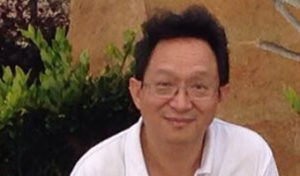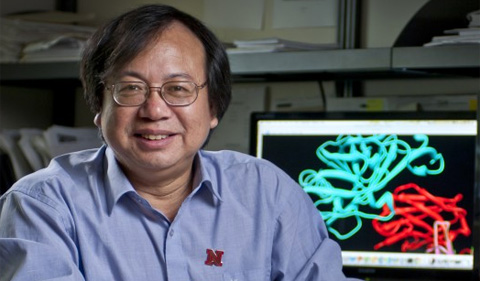Ohio University’s Chemistry and Biochemistry Colloquium Series presents Dr. Liancheng Du on “Discovering New Anti-infectives from Underexplored Environmental Microorganisms” on Monday, Nov. 21, at 4:10 p.m. in Clippinger Laboratories Room 194.
Du is Professor of Chemistry at the University of Nebraska – Lincoln.
Abstract: The Gram-positive actinomycetes have traditionally been the source for discovering new bioactive natural products. However, many Gram-negative bacteria, such as the ubiquitous inhabitants of soil and water, the gliding bacteria Lysobacter, remain largely unexplored.1 We have been searching for new anti-infectives from previously untapped natural resources. From L. enzymogenes C3, we isolated a group of polycyclic tetramate macr olactams (PTM) that exhibit potent inhibitory activity against a wide range of fungal species. The PTM chemical structure is distinct from any existing antifungal drug on the market, and the mode of action is likely novel.2-6 We have identified the biosynthetic gene cluster and revealed an unprecedented biosynthetic mechanism for hybrid polyketide/peptide in prokaryotic organisms.7,8 From L. enzymogenes OH11, we isolated WAP-8294A, a family of cyclic lipodepsipeptides with exceptionally potent anti-MRSA activity, and investigated the biosynthetic mechanism.9,10 Among the family, WAP-8294A2 was in phase I/II clinical trials. The WAP synthetase represents one of the largest NRPS complexes, consisting of 45 functional domains. From L. antibioticus OH13, we isolated six phenazine antibiotics, including the wellknown antibiotic myxin, an aromatic N-oxide.1 1 The mechanism underlying aromatic N-oxidation was unclear. Using both in vivo and in vitro approaches, we recently demonstrated that a BaeyerVilliger-like enzyme is responsible for all phenazine N-oxides, which represents the first experimentally characterized enzyme that catalyzes an aromatic N-oxidation.11 These studies have not only led to new bioactive compounds, but also to new insights into the mechanisms for biosynthesis and regulation, as well as new anti-infectives through rational approaches in synthetic biology.
olactams (PTM) that exhibit potent inhibitory activity against a wide range of fungal species. The PTM chemical structure is distinct from any existing antifungal drug on the market, and the mode of action is likely novel.2-6 We have identified the biosynthetic gene cluster and revealed an unprecedented biosynthetic mechanism for hybrid polyketide/peptide in prokaryotic organisms.7,8 From L. enzymogenes OH11, we isolated WAP-8294A, a family of cyclic lipodepsipeptides with exceptionally potent anti-MRSA activity, and investigated the biosynthetic mechanism.9,10 Among the family, WAP-8294A2 was in phase I/II clinical trials. The WAP synthetase represents one of the largest NRPS complexes, consisting of 45 functional domains. From L. antibioticus OH13, we isolated six phenazine antibiotics, including the wellknown antibiotic myxin, an aromatic N-oxide.1 1 The mechanism underlying aromatic N-oxidation was unclear. Using both in vivo and in vitro approaches, we recently demonstrated that a BaeyerVilliger-like enzyme is responsible for all phenazine N-oxides, which represents the first experimentally characterized enzyme that catalyzes an aromatic N-oxidation.11 These studies have not only led to new bioactive compounds, but also to new insights into the mechanisms for biosynthesis and regulation, as well as new anti-infectives through rational approaches in synthetic biology.



















Comments